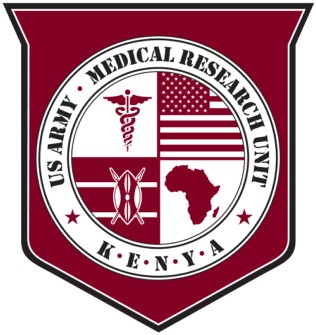


HIV CARE AND TREATMENT HIV Overview | PEPFAR | KDOD
PRESIDENT'S EMERGENCY PLAN FOR AIDS RELIEF -PEPFAR
South Rift Valley Walter Reed Project HIV Program, Kericho, Kenya
The President of the United States submitted to the Congress a comprehensive five-year global strategy for President Bushís Emergency Plan for AIDS Relief early 2003. By signing the legislation [P. L. 108-25] he launched an emergency effort that was to provide $15 billion over five years to fight AIDS abroad. It is the largest single up-front commitment in history for an international public health initiative involving a specific disease.
The Presidents strategy takes into account the pragmatic necessity that annual funding requests within that commitment will ramp up as effective implementation capabilities are put in place and expanded. It outlines work through bilateral programs as well as the significant role that will be played by multilateral partners such as the Global Fund to Fight AIDS, Tuberculosis, and Malaria. Also, it recognizes that national leadership is one of the critical factors in achieving success in the battle against HIV/AIDS. To carry out this extraordinary humanitarian effort, the plans ultimately draws on that leadership and follow closely the strategies and priorities of the host countries that the fund seeks to assist.
Presidentís Emergency Plan for AIDS Relief comes to Kericho
In April 2004, several Kericho hospitals began offering comprehensive HIV/AIDS care and treatment by PEPFAR through the Walter Reed Project. As one of the United States Government Agencies involved in the Presidentís Emergency Plan in Kenya, the United States Army Military Research Unit/Walter Reed Project has implemented comprehensive HIV/AIDS care in western Kenya.

A focus of the Presidentís Emergency Plan is the provision of anti-retroviral therapy to individuals with HIV/AIDS who need therapy. In April 2004, WRP partners in Kericho district hospital, bordering tea plantation and faith-based hospitals/dispensaries began treating HIV-infected persons and their affected family members with drugs provided by the Walter Reed Project under the Presidentís Emergency Plan.
From Kericho to the South Rift Valley Province
The Kericho district comprehensive care for HIV positive individual expanded in the second year of the Emergency plan to cover the whole of the South Rift Valley. As already noted the USAMRU-K brought comprehensive HIV care and treatment services to this area of the Rift Valley Province in April 2004 under the Emergency Plan, thereby fulfilling a moral obligation to Kenyans living in a previously underserved geographic region that had no existing comprehensive HIV/AIDS programs. Having rapidly grown to providing care and treatment in 6 districts including 12 treatment facilities, the South Rift Valley HIV Program covers a population of more than 2 million Kenyans.
The USAMRU-K provides technical and managerial support to the programs. Currently, 11 (9 Kenyan/LES, 2 USPSC/Contractors) staff provide technical and administrative assistance to treatment, counseling and testing activities.
As of December 2006, treatment centers in the South Rift Valley have started 6635 qualifying Kenyans on antiretroviral therapy and another 7550 are on palliative care. 640 TB HIV co infected persons have been treated in the unique TB/HIV clinic; another close to 6097 have gone through the DTC program.
PMTCT in the south Rift Valley started in 2001 in Kericho district hospital with assistance from the Walter Reed Project (WRP) and continues to work with the Ministry of Health (MOH) to scale up PMTCT services from the expected 120 health facilities at the end of financial year 2006 ( FY06). As of (To date) 15,102 pregnant mothers have received counseling and Testing (CT) services during the antenatal, intra-partum, and postnatal period.
Voluntary Counseling and Testing-VCT and Diagnostic Testing and Counseling-DTC in addition to PMTCT plus, are the entry points to care and treatment programs. WRP has supported the establishment and maintenance of counseling and testing (CT) services in partnership with the Ministry of Health in six districts in the south Rift Valley Province. All together the six districts represent a collection of 58 district hospitals, sub-district hospitals, and health facilities that will be equipped to serve as nationally registered CT sites. CT activities have also been rapidly scaled up to include mobile VCT activities throughout the rural areas within the Kericho district.
Under PEPFAR, there is also an Orphan and Vulnerable Children (OVC) program that is supported through Samoei Community Response to OVC and Live with Hope Centre. Samoei currently offers a comprehensive package to care for a targeted 600 OVC in the Belgut constituency by providing shelter, medical care, food, psycho-social programs, and education to all their OVC while Live With Hope Centre targeted 500 OVC in Motobo area in Ainamoi constituency.
New HBC Clinic at Live with hope centre-(LWHC
Entomology & Vector Borne Diseases
Malaria Clinical Studies
Basic Sciences
Malaria Drug Studies
Malaria Vaccine Trials
HIV / AIDS
Research
Care and Treatment
Administration
Information Technology
Library
Center of Excellence (CoE)
Office of Regulatory Affairs
Employment
Links
Capacity Building
Visitor information
Medical Care / TRICARE
Areas of special interest
Contact Information
News & Events
USAMRU-K Mail